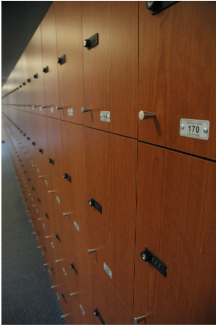June 2015
Category: GLOUCESTER CITY JR-SR HIGH
End-of-Year Locker Cleanouts in Gloucester City Schools

[source]
Each time the calendar turns toward summer, campuses start a simple but meaningful routine. Compartments that held books, notes, and small keepsakes get emptied, sorted, and cleared so hallways feel fresh again. This task marks a clear finish to the year and helps everyone shift focus to what comes next.
What looks like a basic task also carries a larger point for the community. School locker items show the real handoff from one grade to another. From rediscovered pencils to long-lost sweatshirts, the pile further tells a small story of daily life.
Year-End Habits Around Hallway Storage
The closing weeks bring a steady pattern. Teachers set time for kids to empty compartments, sort papers, and decide what should go home or be tossed. A flow gives a clear finish to projects and tests while easing the move to summer or a higher grade.
It also allows families to plan for packed bags coming through the door. The district also benefits from neat corridors and clean surfaces. Predictability further reminds students that wrap-up weeks are also about care and preparation, not only finals and parties.
Finding What Was Left Behind
Some of the most surprising moments happen when overlooked items come to light. Learners often uncover a notebook from September, a jacket from winter, or a small trinket that brings back a memory from early fall. These finds make kids smile and quietly show how much has changed over the months.
There is also a practical side. Busy schedules make it easy to misplace things, so a planned sweep is the best chance to recover them. In local campuses, these rediscoveries turn a routine task into something personal, adding warmth to an otherwise simple cleanup.
Sharing Extra Materials With Classmates
Gathered supplies can be put to work for the good of others. Spare binders, unused paper, and extra pens often get set aside for the following session so students who need help can start strong. This approach trims waste and supports fairness across classrooms.
When a clear system is in place, teachers can stock a small shelf for community use. Families also feel good knowing that useful items do not go to the trash. Pooling leftovers builds compassion and allows everyone to enjoy the basics required for learning.
How Schools Bring People Together
What looks like a hallway task can connect many hands. Parents, volunteers, and staff sometimes pitch in to guide the process, which turns a simple sweep into a shared effort. The cooperation shows how even small jobs can strengthen ties in the local education scene.
These ties also reach beyond the building. Families chat about what came home, faculty prepare rooms for the next group, and local groups may receive donated goods. The whole cycle reminds the neighborhood that campuses often serve as the heart of community life.
Teaching Order and Ownership
Sorting a compartment builds skills that last. Students decide what to keep and what to donate, which trains clear thinking. The simple routine also teaches follow-through and mindfulness for personal space. With these habits set early, learners carry neatness and reliability into later classes and future jobs.
Getting Ready for Next Term
Once the shelves are bare, minds feel lighter too. Clear spaces make it easier to imagine new goals, fresh routines, and better study habits. The cleanup acts like a reset button that helps kids step into the coming session with focus.
Teachers benefit as well. Empty rooms and organized closets give staff a head start on planning and room design. Across the district, a clean slate helps welcome the next group of learners with calm and order.
The Eco Impact
By opting for used school locker collections, schools can help cut down on waste. This can also show students the importance of reusing what still has value. Pens, folders, and even clothing can further be redirected to those who can use them. This approach not only connects learning with real responsibility, but emphasizes the role each individual plays in keeping the area green.
Endnote
By treating a small duty with care, campuses highlight how little habits shape a bigger culture of support. A solid approach also reminds everyone that even simple routines can leave a lasting mark on learners and the wider neighborhood.